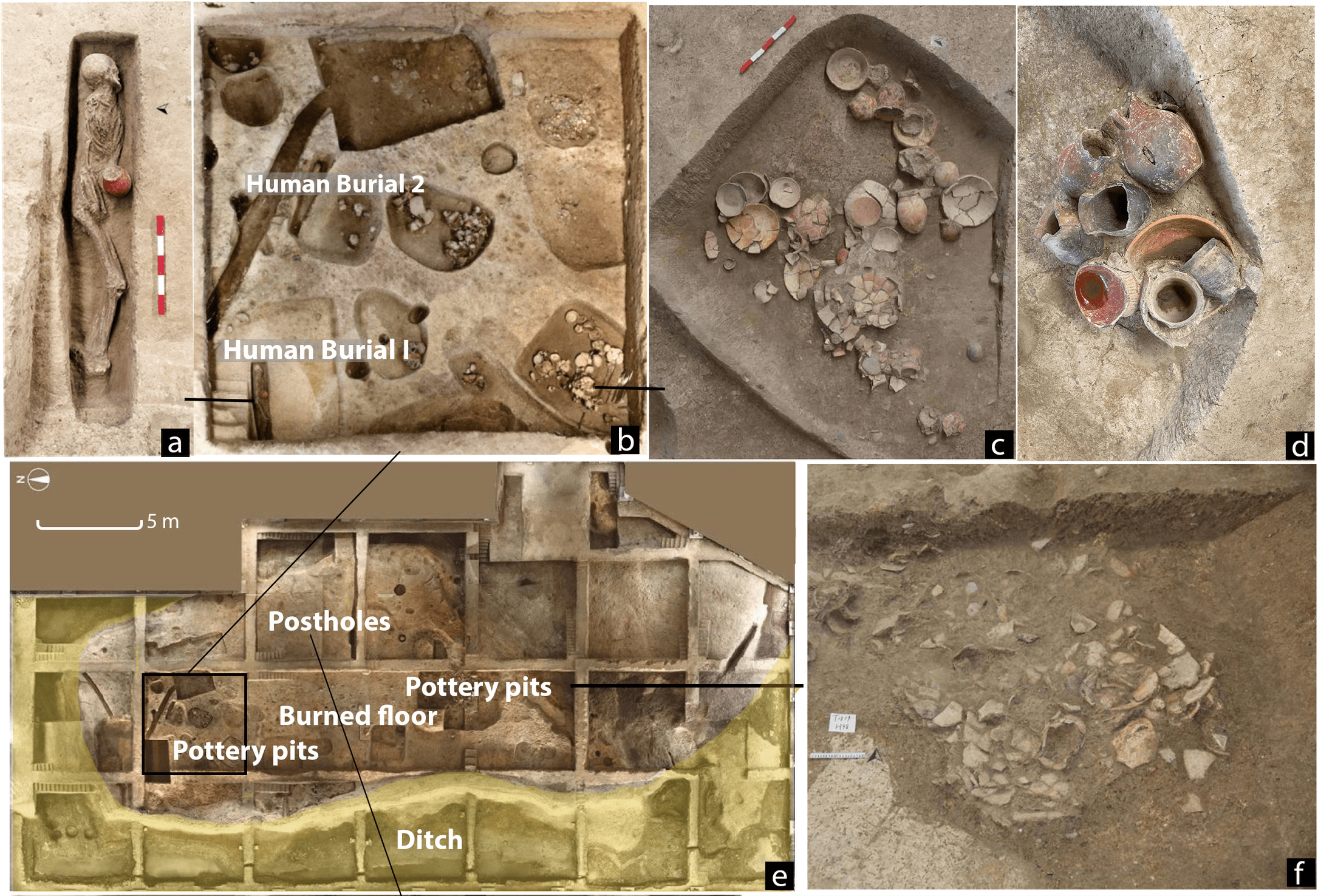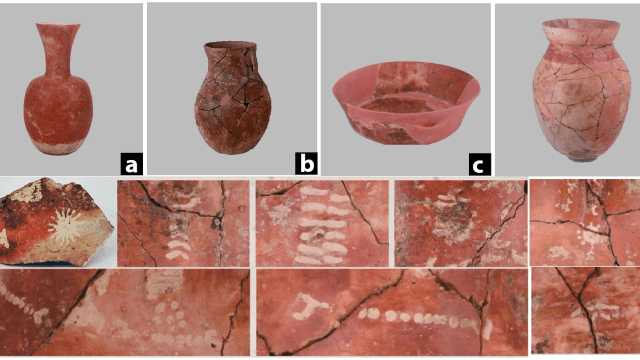Archaeologists in southeastern China found evidence of ancient beer consumption tucked away in some of the ceramic vessels at the site. Because the excavation also turned up two human skeletons, the research team believes the beer was ritually consumed, perhaps to honour the dead.
The burial site, called Qiaotou, is a platform mound about three-quarters the size of a football field. Besides the human remains, the archaeologists discovered several different pits filled with pottery. And within those pots the researchers found ancient crud — starches, fossilised plant residue, and fungal remains — that indicated some of those vessels held alcohol. The team’s results were published last month in PLOS One.
In all, there were four bowls, nine jars, and seven long-necked hu pots within the site. Hu pots — the ones found at Qiaotou are slender and flared at the top, looking a bit like a goldfish stood on its head — are known from later historical periods for containing alcohol. The archaeologists analysed the microfossil residues from the interior surfaces of the hu pots to determine they had been used for drinking; the 9,000-year-old brew the pots once held was a rice beer crafted using a mould starter.
Beer making is generally a two-step process. First, enzymes break down starches into sugars, a process called saccharification. Then, yeasts change those sugars into alcohol and carbon dioxide, which is fermentation. The presence of both the botanical and microbial materials necessary for the two processes is how the researchers determined the purpose of the vessels.

“Our results revealed that the pottery vessels were used to hold beer, in its most general sense — a fermented beverage made of rice (Oryza sp.), a grain called Job’s tears (Coix lacryma-jobi), and unidentified tubers,” said Jiajing Wang, an archaeologist at Dartmouth College and lead author of the study, in a press release. “This ancient beer though would not have been like the IPA that we have today. Instead, it was likely a slightly fermented and sweet beverage, which was probably cloudy in colour.”
The ancient residents of Qiaotou using rice in their alcohol isn’t surprising, given their location; that swath of southern China remains a big rice producer. When the site at Qiaotou was occupied, rice was still in its early days of domestication, perhaps making the complicated process of fermenting alcoholic beverages all the more impressive.

Besides the plant remains, the residue analysis also turned up traces of mould, which acts as a starter in fermentation processes. Similar moldy findings were made at an 8,000-year-old site, the recent team reported, making theirs the oldest known to use such a mould in its fermentation processes. That said, the team isn’t certain that the beer production was intentional.
“We don’t know how people made the mould 9,000 years ago, as fermentation can happen naturally,” says Wang. “If people had some leftover rice and the grains became mouldy, they may have noticed that the grains became sweeter and alcoholic with age. While people may not have known the biochemistry associated with grains that became mouldy, they probably observed the fermentation process and leveraged it through trial and error.”
Based on the high-quality of the pottery at Qiaotou and the large amount of rice at the site, which contrasts with the relatively small amounts of rice found at other sites of similar age, the archaeological team believes the beer may have been a luxury consumable, something to break out only for events of particular significance.
The beer at Qiaotou isn’t the oldest beer ever found — evidence of beer has turned up at sites in Israel and Turkey from over 10,000 years ago — but its circumstances illustrate the importance of such alcoholic beverages in ancient cultural events.
